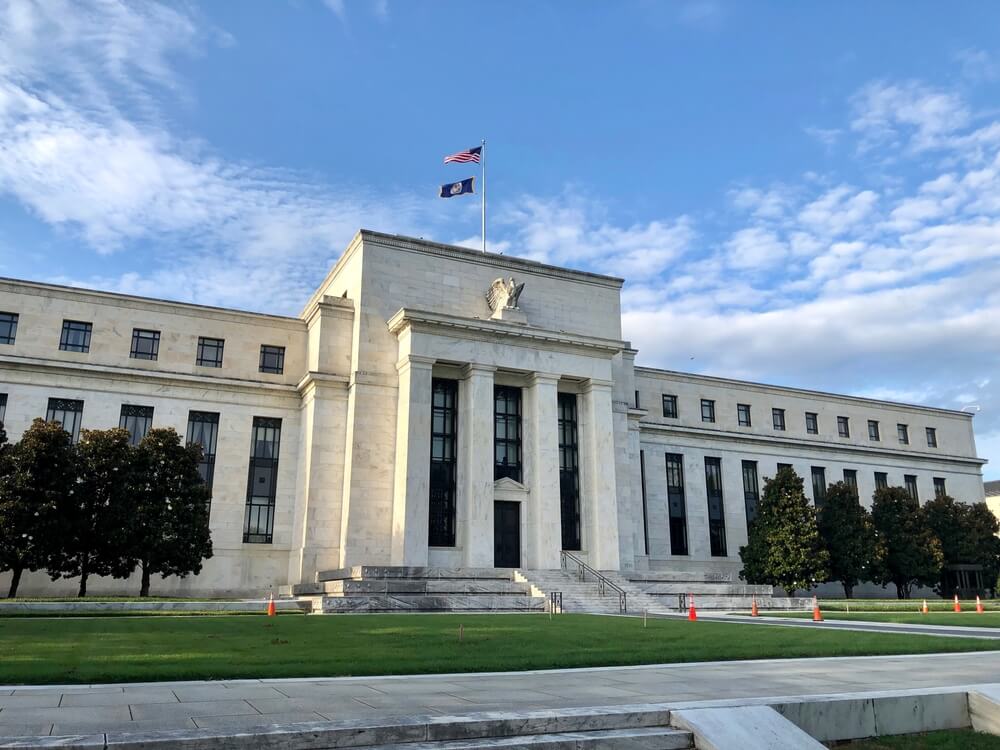The independence of the US Federal Reserve is back in the spotlight. Late last month, Fed Chair Jerome Powell met at the White House with President Donald Trump “to discuss economic developments,” as the Fed antiseptically put it in a post-meeting statement. Market participants will wonder what went on.
Held at the president’s request, the meeting was exceptional but not unprecedented. Fed chairs have met with presidents on occasion, although those occasions generally were less than propitious.
In 1965, William McChesney Martin met with Lyndon Johnson at LBJ’s Texas ranch. Johnson worried that a Fed interest-rate hike had created headwinds for growth, and anticipated a challenging midterm election.
LBJ confronted the Fed chair physically as well as verbally, using his considerable girth to pin Martin to a wall.
The impact on Fed policy is disputed to this day. President Richard Nixon met with his Fed Chair Arthur Burns on scores of occasions, regularly pressing him to pursue expansionary monetary policies, which Burns obligingly did.
In 1984, with another election looming, Ronald Reagan summoned Paul Volcker to the White House, where James Baker, the president’s chief of staff, instructed Volcker not to raise rates.
Ben Bernanke met repeatedly with George W. Bush during the Global Financial Crisis, when cooperation to prevent collapse of the financial system was imperative. Powell himself dined with Trump at the White House in 2019.
Independence requires accountability
Periodic meetings pose no threat to central bank independence. Independence requires accountability, and in describing the Fed’s priorities and general outlook to the president, the Fed chair is demonstrating accountability to the public.
But as in the case of Nixon and Burns, a president who regularly harangues the Fed chair, specifically over interest-rate policy, threatens that independence.
Trump has repeatedly criticized the Fed’s interest-rate decisions
Trump has, of course, repeatedly criticized the Fed’s interest-rate decisions.
The post-meeting statement issued by the Fed was careful to say that “expectations for monetary policy” were not discussed. So far so good, assuming the statement can be taken at face value.
The second event raising questions about Fed independence was the Supreme Court’s May 22 decision in Trump v. Wilcox, in which the Court granted an administration request to allow the president to fire members of independent government agencies such as the National Labor Relations Board, which oversees union elections and labor laws.
The court explicitly exempted the Fed
Technically, the Court paused a lower court ruling that would have stayed the president’s power of dismissal, suggesting that presidential discretion is justified because NLRB members “exercise considerable executive power.”
In other words, they are de facto members of the executive branch, subordinate to the president. This logic would appear to put the Fed squarely in Trump’s crosshairs.
But in a 6-3 ruling, the six-member majority on the court explicitly exempted the Fed. “The Federal Reserve,” the justices reasoned, “is a uniquely structured, quasi-private entity that follows in the distinct historical tradition of the First and Second Banks of the United States.”
This argument might be seen as providing strong support for Fed independence, except that it is illiterate, illogical, and ahistorical.
The First and Second Banks of the United States, which executed limited functions on behalf of the government between 1791 and 1836, were private banks
The First and Second Banks of the United States, which executed limited functions on behalf of the government between 1791 and 1836, were private banks, full stop.
Along with providing depository services to the government, they competed with other banks, extending commercial loans. There was nothing quasi about their private status.
Advocates of Fed independence should be worried
In contrast, the Federal Reserve Board – assuming that’s what the justices mean when they write “Federal Reserve” – is made up of seven presidentially-appointed public servants.
The Federal Open Market Committee, responsible for interest-rate policy, includes those seven board members and five regional Reserve Bank presidents, who are appointed by Reserve Bank directors, subject to the approval of the Federal Reserve Board.
 Removing checks on presidential powers while arbitrarily exempting the Fed opens the door to arbitrarily not exempting the Fed
Removing checks on presidential powers while arbitrarily exempting the Fed opens the door to arbitrarily not exempting the Fed
The regional Reserve Banks come closest to being “quasi-private,” because private citizens serve on their boards. But to argue that the same is true of the FOMC or the Federal Reserve System as a whole is a non sequitur.
Beyond the Fed’s governance is the scope of its authority. The First and Second Banks of the United States lacked statutory authority to regulate banks, a key public-policy mandate of the Fed.
In justifying its decision, the majority cited an earlier ruling, Seila Law LLC v. Consumer Financial Protection Bureau, in which the Court affirmed the president’s power to remove the heads of agencies led by a single director and not a board.
That decision included a footnote that the Second Bank and the Fed “can claim a special historical status.” But it provided no legal basis for that statement, and no judgment of validity of the claim. The note reads like a ChatGPT hallucination.
Removing checks on presidential powers while arbitrarily exempting the Fed opens the door to arbitrarily not exempting the Fed. Advocates of Fed independence should be worried. Maybe that’s what Trump and Powell talked about.
Barry Eichengreen, Professor of Economics and Political Science at the University of California, Berkeley, is a former senior policy adviser at the International Monetary Fund.